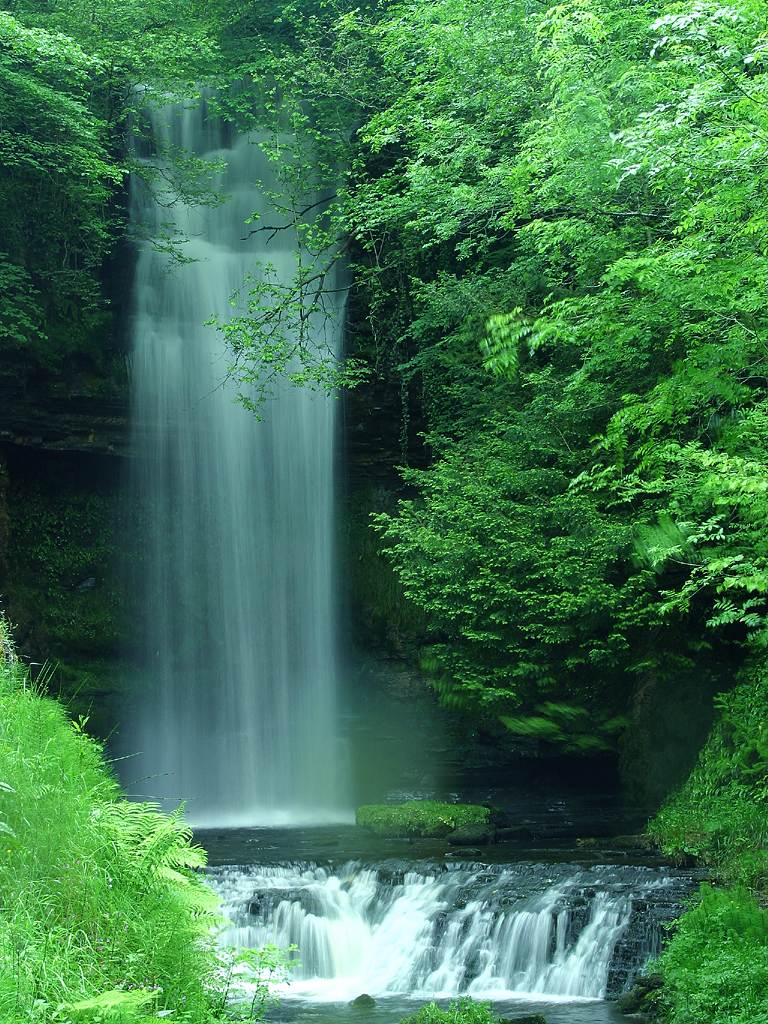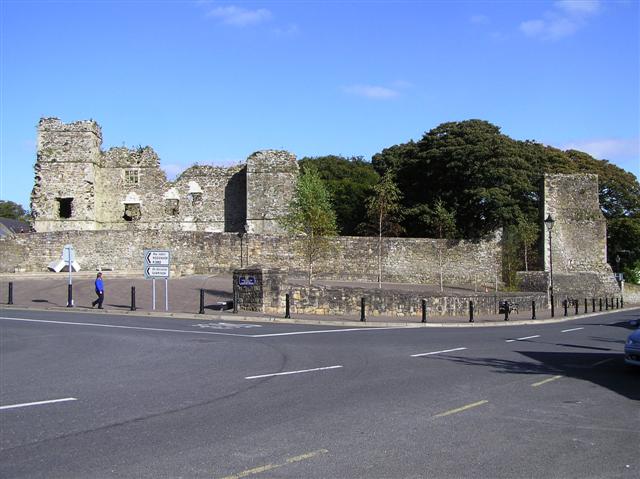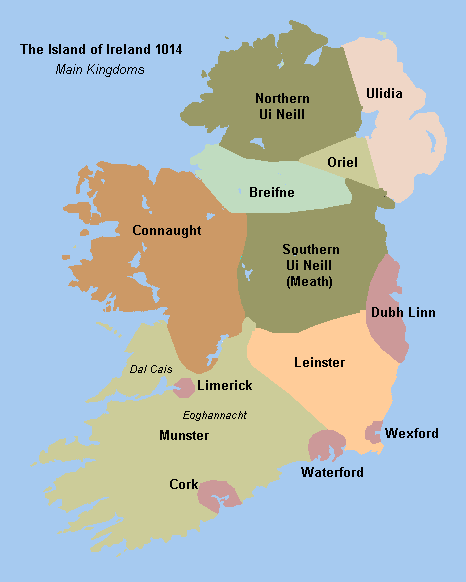|
Dromahair
Dromahair () is a village in County Leitrim, Ireland. Dromahair is 10 km (6 mi) from Manorhamilton and 17 km (10 mi) from Sligo town. Geography Dromahair lies in the hilly north west of County Leitrim amid some stunning unspoiled natural landscapes. The "Sleeping Giant" mountain formation (comprising Keelogyboy, Leean and Benbo) is visible on approaches to the village, as is Lough Gill below the Slieve Daeáne and Killerry mountain. The village itself is also idyllic, located on the banks of the River Bonet, which flows into Lough Gill. Much of Dromahair was modelled on a village in Somerset by the Earl of Leitrim, and the central streetscape still follows the pattern set down by him. History The village takes its name from the ridge of high ground on which it is located above the Bonet River. The ridge was the site of the important early church site of Drumlease, a Patrician foundation of the fifth century AD. The name in Irish is ''Droim Dhá Ethiar'', m ... [...More Info...] [...Related Items...] OR: [Wikipedia] [Google] [Baidu] |
County Leitrim
County Leitrim ( ; ) is a Counties of Ireland, county in Republic of Ireland, Ireland. It is in the Provinces of Ireland, province of Connacht and is part of the Northern and Western Region. It is named after the village of Leitrim, County Leitrim, Leitrim. Leitrim County Council is the Local government in the Republic of Ireland, local authority for the county, which had a population of 35,199 according to the 2022 census of Ireland, 2022 census. The county was based on the Gaelic Ireland, Gaelic territory of West Breifne, West Breffny () as it existed in the 1580s. Geography Leitrim is the 26th in size of the 32 counties by area (21st of the 26 counties of the Republic) and the smallest by population. It is the smallest of Connacht's five counties in both size and population. Leitrim is bordered by the counties of County Donegal, Donegal to the north, County Fermanagh, Fermanagh to the north-east, County Cavan, Cavan to the east, County Longford, Longford to the south, Count ... [...More Info...] [...Related Items...] OR: [Wikipedia] [Google] [Baidu] |
Creevelea Abbey
Creevelea Abbey is an early 16th-century Franciscan friary and National Monument located in Dromahair, County Leitrim, Ireland. Although in ruins, Creevelea Abbey is still in use as a grave yard. Location Creevelea Abbey is located west of Dromahair, on the west bank of the Bonet River. History Creevelea Friary was founded in 1508 by Eóghan O'Rourke, Lord of West Bréifne, and his wife Margaret O'Brian, daughter of a King of Thomond, as a daughter foundation of Donegal Abbey. Creevelea was the last Franciscan abbey built before the Dissolution of the monasteries. The friary was accidentally burned in 1536, but was rebuilt by Brian Ballach O'Rourke. In 1590, Richard Bingham stabled his horses at Creevelea during his pursuit of Brian O'Rourke, who had sheltered survivors of the Spanish Armada. Dissolved c. 1598. Sir Tadhg O'Rourke (d. 1605), last King of West Bréifne and Thaddeus Francis O'Rourke (d. 1735), Bishop of Killala are buried here. Another house was built for ... [...More Info...] [...Related Items...] OR: [Wikipedia] [Google] [Baidu] |
Manorhamilton
Manorhamilton () is the second-largest town in County Leitrim, Ireland. It is located on the N16 from Sligo and from Enniskillen. History Before the Plantations of Ireland, the settlement was known, and continues to be known in the Irish language, as ''Cluainín'' or ''Cluainín Uí Ruairc'' (meaning "little meadow of O'Rourke"). This lay on the west bank of the Owenbeg. Uí Ruairc (anglicised as O'Rourke) was the local Gaelic chieftain, based in nearby Dromahair, whose land was seized by the English and then granted to Sir Frederick Hamilton for his services in the European wars of the 17th century. As a result of his actions, Hamilton to this day is considered to have been a tyrant by the local people. He began building a new town on the east bank of the river, in the townland of Clonmullen, which he renamed 'Manorhamilton'. After the town emerged, the name ''Baile Hamaltuin'' was adopted by Irish speakers and its anglicised form 'Ballyhamilton' was for a time us ... [...More Info...] [...Related Items...] OR: [Wikipedia] [Google] [Baidu] |
Drumahaire (barony)
Drumahaire () is a Barony (Ireland), barony in County Leitrim, Republic of Ireland, Ireland. Etymology Drumahaire barony takes its name from the village of Dromahair (, "Two Demons Ridge"). The Irish ''thiar'' is a shortening of ''eithiar'', a term that refers to a spirit of the air. Location Drumahaire is found in central County Leitrim, stretching from the Dartry Mountains and Lough Gill to the Iron Mountains (Ireland), Iron Mountains and Lough Allen. The Barony of Drumahaire is bordered to the north by Rosclogher (barony), Rosclogher; to the southeast by Leitrim (County Leitrim barony), Leitrim and Carrigallen (barony), Carrigallen (all the preceding baronies are also in County Leitrim); to the east by Tullyhaw, County Cavan; to the west by Carbury (barony), Carbury and Tirerril, County Sligo; and to the south by Boyle (barony), Boyle, County Roscommon. History The ''Ó Ruairc'' (O'Rourke) were kings in this region for many centuries. O'Finn and O'Carroll were chiefs of C ... [...More Info...] [...Related Items...] OR: [Wikipedia] [Google] [Baidu] |
Breifne
The Kingdom of Breifne or Bréifne (), anglicized as Breffny, was a medieval overkingdom in Gaelic Ireland. It comprised what is now County Leitrim, County Cavan and parts of neighbouring counties, and corresponds roughly to the Roman Catholic Diocese of Kilmore. It had emerged by the 10th century, as a confederation of ' headed by an overking drawn from the Uí Briúin Bréifne. By the 11th century, Bréifne was ruled by the Ua Ruairc (O'Rourke) dynasty. The kingdom reached the height of its power in the 12th century, under Tigernán Ua Ruairc. During the latter part of his reign, Bréifne took part in campaigns against the Norman invasion of Ireland. His assassination by the Anglo-Normans in 1172 was followed by a succession dispute, and a conflict between the Ua Ruairc and Ua Raghallaigh (O'Reilly) dynasties. Following the Battle of Magh Slecht in 1256, Bréifne split into West Breifne (ruled by the Ua Ruairc) and East Breifne (ruled by the Ua Raghallaigh). Bréif ... [...More Info...] [...Related Items...] OR: [Wikipedia] [Google] [Baidu] |
Donegal Abbey
Donegal Abbey (Irish: ''Mainistir Dhún na nGall'') is a ruined Franciscan Priory in Donegal in Ireland. It was constructed by the O'Donnell dynasty in the fifteenth century and remained a center of Classical Christian education even after its destruction during the Nine Years War. It is sometimes referred to as Donegal Friary. It was built in 1474 on the orders of the leading Gaelic lord of the area, the ruler of Tyrconnell Hugh Roe O'Donnell, the First, and his wife Finola O'Brien. In the Nine Years' War, the Abbey was used for a meeting between the rebel leadership and envoys of the Spanish King Philip II. The Abbey was the scene of fighting during the 1601 Siege of Donegal when a force led by Red Hugh O'Donnell attempted to capture the town from Crown forces led by the Gaelic warrior Niall Garve O'Donnell. During the fighting Niall Garve's younger brother Conn O'Donnell was killed. It is also the burial place of Hugh McManus O'Donnell, who died in 1600 after many ye ... [...More Info...] [...Related Items...] OR: [Wikipedia] [Google] [Baidu] |
New Model Army
The New Model Army or New Modelled Army was a standing army formed in 1645 by the Parliamentarians during the First English Civil War, then disbanded after the Stuart Restoration in 1660. It differed from other armies employed in the 1639 to 1653 Wars of the Three Kingdoms in that members were liable for service anywhere in the country, rather than being limited to a single area or garrison. To establish a professional officer corps, the army's leaders were prohibited from having seats in either the House of Lords or House of Commons. This was to encourage their separation from the political or religious factions among the Parliamentarians. The New Model Army was raised partly from among veteran soldiers who already had deeply held Puritan religious beliefs, and partly from conscripts who brought with them many commonly held beliefs about religion or society. Many of its common soldiers therefore held dissenting or radical views unique among English armies. Although the Ar ... [...More Info...] [...Related Items...] OR: [Wikipedia] [Google] [Baidu] |
Ferns, County Wexford
Ferns (, short for ) is a historic town in north County Wexford, Ireland. It is north of Enniscorthy. The remains of Ferns Castle are in the centre of the town. The town is in a civil parish of the same name. History Ferns is believed to have been established in the 6th century, when a monastery was founded in 598 dedicated to St Mogue of Clonmore (St. Aidan), who was a Bishop of Ferns. The town became the capital of the Kingdom of Leinster, and also the Capital of Ireland when the kings of that southern part of the province established their seat of power there. It was a very large city, but shrank after a fire destroyed most of it. The city stretched all the way past the River Bann (tributary of the River Slaney), and it is speculated that had it not burned, it would be one of Ireland's biggest cities today. King Dermot MacMurrough founded St. Mary's Abbey as a house of Augustinian canons c. 1158 and was buried there in 1171.T. O'Keeffe & R. Carey Bates, The abbey and ... [...More Info...] [...Related Items...] OR: [Wikipedia] [Google] [Baidu] |
Provinces Of Ireland
There are four provinces of Ireland: Connacht, Leinster, Munster and Ulster. The Irish language, Irish word for this territorial division, , meaning "fifth part", suggests that there were once five, and at times Kingdom of Meath, Meath has been considered to be the fifth province. In the medieval period, however, there were often more than five. The number of provinces and their delimitation fluctuated until 1610, when they were permanently set by the English administration of James VI and I, James I. The provinces of Ireland no longer serve administrative or political purposes but function as historical and cultural entities. Etymology In modern Irish language, Irish, the word for province is (pl. ). The modern Irish term derives from the Old Irish (pl. ) which literally meant "a fifth". This term appears in 8th-century law texts such as and in the legendary tales of the Ulster Cycle where it refers to the five kingdoms of the "Pentarchy". MacNeill enumerates the five earl ... [...More Info...] [...Related Items...] OR: [Wikipedia] [Google] [Baidu] |
Charles Patrick Meehan
Charles Patrick Meehan (12 July 1812 – 14 March 1890) was an Irish Catholic priest, historian and editor. Life Meehan was born at 141 Great Britain Street, Dublin, on 12 July 1812. He received his early education at Ballymahon, County Longford, the native place of his parents. In 1828 he went to the Irish Catholic College, Rome, where he studied until he was ordained a priest in 1834. Returning to Dublin in the same year Meehan was appointed to a curacy at Rathdrum, County Wicklow. After nine months he was transferred to a curacy at the parish church of Saints Michael and John, Dublin. In that position he continued till his death, on 14 March 1890. A friend and confessor to the poet James Clarence Mangan, Meehan encouraged him to write his autobiography. Meehan was also elected a member of the Royal Irish Academy. Works He wrote poetry for ''The Nation'', a radical nationalist newspaper, under the pen-name 'Clericus'. He wrote signed articles for '' Duffy's Hibernian M ... [...More Info...] [...Related Items...] OR: [Wikipedia] [Google] [Baidu] |
Dermot McMurrough
Diarmait Mac Murchada (Modern Irish: ''Diarmaid Mac Murchadha''; anglicised as Dermot MacMurrough or Dermot MacMurphy; – c. 1 May 1171), was King of Leinster in Ireland from 1127 to 1171. In 1167, he was deposed by the High King of Ireland, Ruaidrí Ua Conchobair. To recover his kingdom, Mac Murchada solicited help from King Henry II of England. His issue unresolved, he gained the military support of the Richard de Clare, 2nd Earl of Pembroke (otherwise known as "Strongbow"), thus initiating the Anglo-Norman invasion of Ireland. In exchange for his aid, Mac Murchada promised Strongbow the hand in marriage of his daughter Aoife and the right to succeed to the Kingship of Leinster. Henry II then mounted a larger second invasion in 1171 to ensure his control over Strongbow, resulting in the Norman Lordship of Ireland. Mac Murchada was later known as Diarmait na nGall (Irish for "Diarmait of the Foreigners"). He was seen in Irish history as the king that invited the first-ev ... [...More Info...] [...Related Items...] OR: [Wikipedia] [Google] [Baidu] |








